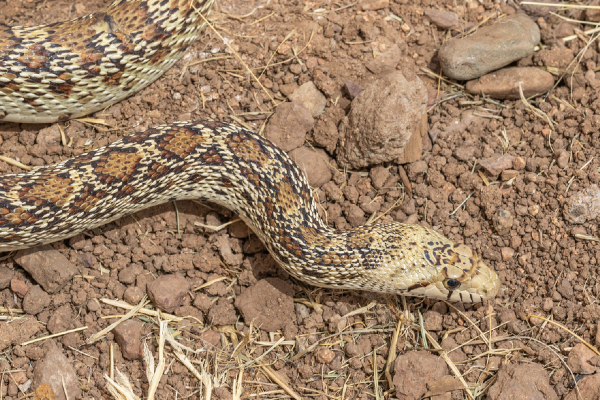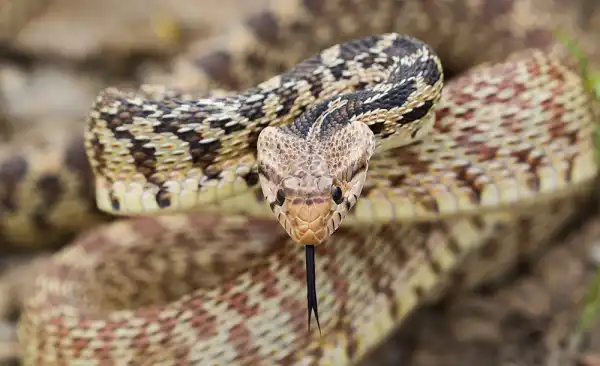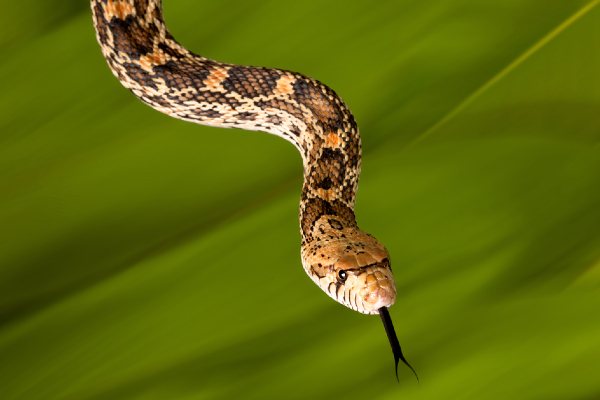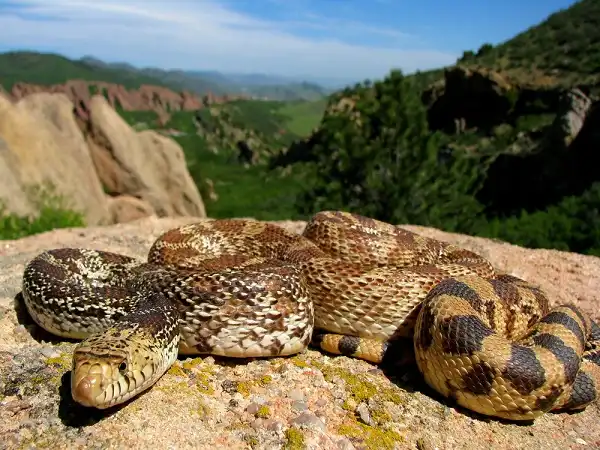There is a lot of controversy over whether or not to kill bull snakes. Some people see them as pests that need to be eradicated, while others appreciate their important role in the environment. This blog post will explore the biology and ecology of bull snakes, their benefits to ecosystems, and why they should be protected.

Bull Snake Description
Bull snakes are non-venomous snakes typically found in North America. Growing to an average length of 4-5 feet, they are one of the largest species of non-venomous snake in the region. Bull snakes are typically a light brown or gray color, with dark brown or black stripes running down their back. They get their name from their habit of “buzzing” when threatened, which sounds similar to a rattlesnake’s warning call. Bull snakes are excellent climbers and often make their homes in trees or rock crevices. In addition to being good swimmers, they are also adept at burrowing underground. Bull snakes primarily eat rodents, but they will also eat lizards, birds, and other small animals. While they are not considered dangerous to humans, they can give a painful bite if provoked.
Bull Snake Habitat
The Bull Snake is a species of large, non-venomous snake that inhabits a wide range of habitats across North America. This adaptable creature is known to live in prairies and grasslands, as well as wooded areas and rocky hillsides. Additionally, the Bull Snake has been observed in disturbed or urban environments such as farmland and abandoned lots. Because this species is able to tolerate dry conditions and strong sun exposure, it tends to choose habitats with little vegetation or ground cover, where it can bask in the open air. Despite its wide distribution, however, the Bull Snake faces numerous threats including habitat loss, pollution, and poaching. To protect this sensitive animal and ensure its ongoing survival, we must work together to preserve Bull Snakes through conservation efforts and sustainable land management practices.

Bull Snake Diet
Bull snakes are carnivorous animals that feed primarily on small mammals, such as rodents, rabbits, and mice. They use their keen sense of smell to locate prey in their natural habitat, using a combination of strikes with their sharp teeth and constriction to immobilize their victims. In addition to hunting for food, bull snakes also consume a variety of insects, including caterpillars and grasshoppers. Despite the fact that bull snakes have highly developed senses of both hearing and vision, they tend to rely primarily on their sense of smell when it comes to locating their food. Overall, the diet of these fascinating reptiles is an important factor in understanding their natural behaviors and habitats.
Bull Snake Size
Bull snakes are large, carnivorous snakes that can range in size from two to six feet long. These powerful predators possess a muscular body and thick skin that allows them to hunt and subdue a wide variety of prey, including small rodents, birds, lizards, amphibians, and even other snakes. Bull snake size is determined primarily by the age of the snake, with individuals reaching adulthood after three or four years. Additionally, environmental factors such as temperature can also impact bull snake size. In general, cooler temperatures tend to produce shorter-lived bull snakes of smaller proportions, while warmer weather promotes faster growth and much larger specimens. Whether they are small or large in size, however, these formidable reptiles remain an important part of their ecosystems and must be respected and protected.

Bull Snake Lifespan
Bull snakes are known for their long lifespans, typically living for 10 to 20 years or more. This longevity is due in part to the snake’s robust physiology, which allows it to withstand a wide range of environmental conditions. Bull snakes are also intolerant of urban development and suburban sprawl, as these developments can reduce the amount of prey available for the snakes to hunt. In addition, overhunting by humans has reduced the overall population sizes of many prey species, further limiting bull snakes’ access to food. Despite these challenges, however, bull snakes continue to thrive thanks to their ability to adapt and evolve throughout their lengthy lifespans. Whether they are hunting mice and rats under rural farmhouses or simply relaxing in a sunny patch of grassland, bull snakes demonstrate an impressive natural resilience that is well worth celebrating.
Bull Snake Behavior
Bull snakes are a fascinating species, known for their unique behavior and appearance. Bull snakes are primarily ambush predators, using their camouflage to blend in with the surrounding habitat and quietly wait for unsuspecting prey to come close. These snakes have also been observed to engage in complex defensive behaviors, including bluffing and feigning strikes. Bull snakes are generally solitary creatures, but they sometimes form loose aggregations when food sources like rodents and rabbits are abundant. To survive in their habitats, bull snakes depend on excellent sensory perception, which is enabled by their wide-set eyes and advanced sense of smell. Overall, bull snakes are an intriguing animal that exhibit a diverse range of behaviors that help them to thrive in the wild.
Bull Snake Speed
Bull snakes are not the fastest snakes in the world, but they can reach speeds of up to 12 miles per hour. Bull snakes are nonvenomous and typically grow to be between 3 and 5 feet long. They are found in a variety of habitats, including prairies, grasslands, and deserts. Bull snakes are excellent swimmers and climbers, and they have been known to climb into trees in search of prey. They primarily eat rodents, but they will also eat lizards, birds, and eggs. Bull snakes are timid snakes that will typically try to flee if approached by a human. However, if cornered, they will coil up and hiss loudly. Despite their aggressive posturing, bull snakes are not dangerous to humans.

Bull Snake Hunting
Bull snakes are a common sight in the American West, and they play an important role in the ecosystem. However, they can also be a nuisance to farmers and ranchers, given their propensity for preying on rodents. As a result, some people choose to hunt bull snakes for sport or to control their population. Bull snakes are relatively easy to catch, but they can be dangerous if not handled properly. When hunting bull snakes, it is important to wear gloves and long sleeves to protect yourself from their bites. In addition, bull snakes should only be killed if you have a permit to do so. Bull snake hunting can be a rewarding experience, but it is important to do so safely and responsibly.
Conclusion
Bull snakes are an important part of the prairie ecosystem. They help keep rodent populations in check, and their presence indicates a healthy environment. If you come across a bull snake, remember to give it plenty of space and enjoy watching this beautiful creature at work.
Frequently Asked Question

